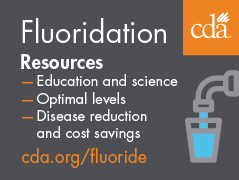Friday, Sep 15, 2017
Amalgam separator Q&A addresses tenant-landlord responsibility
Reprinted with permission from California Dental Association
Dentists who share a building with other dental practices are contacting CDA Practice Support to inquire about their obligations under the Environmental Protection Agency’s amalgam separator requirement, which took effect July 14, 2017. The amalgam separator is designed to remove mercury and other metals entering the waste stream from dental practices.
Specifically, dentists want to know who is responsible for installing the amalgam separator when the building’s vacuum system is shared and the landlord is responsible for maintenance of and payment for water and sewage.
“CDA Practice Support advises dentists to inform the landlord of the new amalgam separator requirement and review their lease agreement, as the terms of the lease agreement may determine who is ultimately responsible for installing amalgam separator equipment,” says CDA Regulatory Compliance Analyst Teresa Pichay. The tenants and landlord also should discuss the situation with the local sanitation agency so the agency can determine who it will hold responsible for the required documentation.
The EPA on June 14 published the final rule under the Clean Water Act, as CDA previously reported. The rule regulates dental practices that place or remove amalgam. The compliance date for most dentists will likely be July 2020, three years after the effective date.
Under the rule, a dental facility that places or removes amalgam is subject to two best management practices: 1) collect and recycle scrap amalgam; 2) clean the chairside traps with non-bleach or non-chlorine cleanser so as not to release mercury.
The separate amalgam separator requirement states that a dental facility must install an amalgam separator that is compliant with either the American National Standards Institute American National Standard/American Dental Association Specification 108 for Amalgam Separators (2009) with Technical Addendum (2011) or the International Organization for Standardization 11143 Standard (2008) or subsequent versions so long as that version requires amalgam separators to achieve at least a 95 percent removal efficiency.
The rule is not intended to apply to dental practices such as orthodontic and periodontal practices except in limited emergency circumstances.
New dental facilities opened for business on or after June 14, 2017, must comply immediately with the rule and submit a one-time compliance report to the local sanitation agency within 90 days of discharging to the sanitary sewer system. Dental practices that already have amalgam separators will be required to replace the equipment within 10 years of the rule’s effective date with equipment meeting the new standard.
Additionally, there are reporting requirements. All dental facilities must submit to the local authority a compliance report and have maintenance and inspection records available for inspection.
- CDA members can find the updated “Amalgam Separator Requirement Q&A” resource in the Practice Support section of CDA’s website. Members can also access the resource at cda.org/amalgam, where they can find an offer for an amalgam separator at a significantly reduced price through PureLife, a CDA Endorsed Program.
Copyright © 2017 California Dental Association







